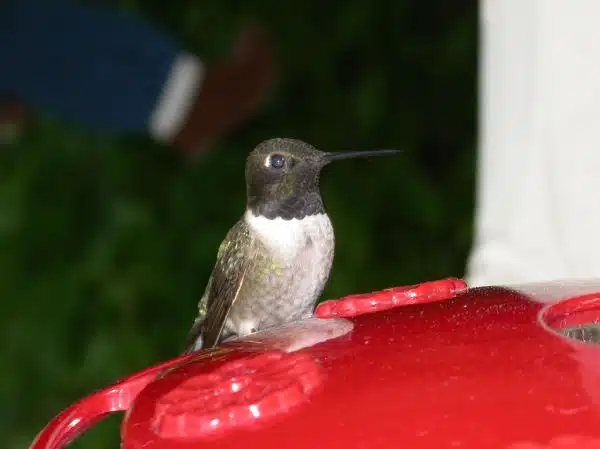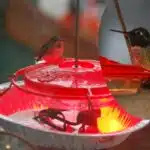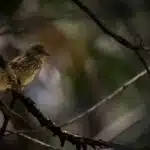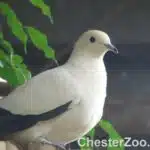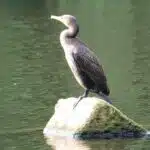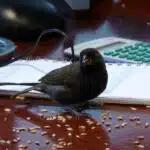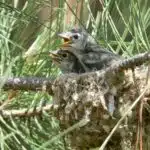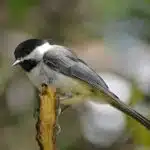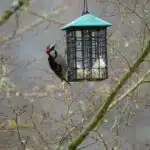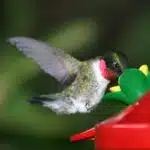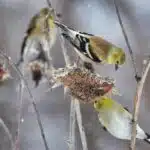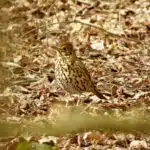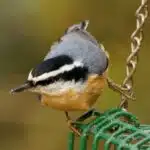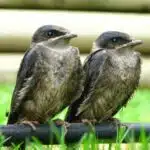Hummingbirds are a fascinating species of birds that are known for their unique ability to hover in the air and fly backwards. With over 300 species of hummingbirds inhabiting the Americas, identifying them can be quite challenging for novice bird watchers. However, with a little knowledge and understanding of their physical characteristics, behavior patterns, and habitat preferences, one can easily identify these tiny birds.
As an ornithologist or avian biologist, it is essential to have a comprehensive understanding of hummingbirds’ taxonomy and biology. Recognizing their distinguishing features such as body size, plumage coloration, bill shape, and tail length can help differentiate between various species. In this article, we will provide you with an overview of how to identify hummingbirds by discussing some key features that can aid in their identification. Whether you are a beginner or an experienced bird watcher looking to enhance your skills, this guide will assist you in identifying these remarkable birds accurately.
Understanding Hummingbird Taxonomy
Hummingbirds are small birds that belong to the family Trochilidae, which consists of over 300 species. These fascinating birds are found only in the Americas, from Alaska to Tierra del Fuego. They are known for their unique ability to hover in mid-air by rapidly flapping their wings, which can beat up to 80 times per second.
Hummingbirds have an interesting evolutionary history that dates back around 22 million years ago, during the Miocene epoch. Fossil evidence shows that hummingbirds were once larger and had different feeding habits than those seen today. Over time, they evolved into smaller sizes and developed specialized beaks and tongues that allowed them to feed on nectar-rich flowers.
Hummingbird migration is another remarkable aspect of these birds’ lives. While some species are year-round residents in certain areas, others travel long distances across continents during migration periods. The Ruby-throated Hummingbird, for example, breeds in North America and migrates all the way to Central America for the winter months. Understanding hummingbird taxonomy involves knowledge of their unique evolutionary traits as well as their migratory patterns.
Moving on from the evolutionary history and migratory patterns of hummingbirds, it is important to examine their physical characteristics more closely. These features play a crucial role in identifying different hummingbird species and will be discussed in detail in the following section.
Physical Characteristics Of Hummingbirds
After learning about the complex taxonomy of hummingbirds, one might wonder how to distinguish between different species. Fortunately, there are several physical characteristics that can be used for identification. These include size, bill shape, and plumage coloration.
Size is perhaps the most obvious identifying feature of hummingbirds. While all hummingbirds are small, some species are significantly larger than others. For example, the Giant Hummingbird can grow up to eight inches in length, while the Bee Hummingbird is only two and a half inches long. By comparing the size of a bird to known species ranges, it may be possible to narrow down potential identifications.
Bill shape is another important characteristic for identification. Different species have evolved specialized bills for feeding on specific types of flowers or insects. For example, the Sword-billed Hummingbird has an incredibly long bill that allows it to reach nectar deep within flowers with long corollas. The Black-chinned Hummingbird, on the other hand, has a short bill adapted for sipping nectar from shallow blooms.
Perhaps the most visually striking identifying feature of hummingbirds is their plumage coloration. While many species have iridescent feathers that shimmer in different colors depending on lighting and angle of view, others have more subdued or uniform coloring. Paying attention to patterns and color combinations can help distinguish between similar-looking species. Moving forward into the next section about ‘plumage coloration’, we will delve further into how these features can be used to identify specific hummingbird species. By studying nuances such as feather texture and hue saturation, we can gain a deeper understanding of these fascinating birds’ unique adaptations and behaviors in their natural habitats.
Plumage Coloration
Plumage coloration is an essential characteristic to look for when identifying hummingbirds. The color patterns on the throat, chest, crown, wings, tail feathers and belly vary between species. The males usually exhibit more vibrant and iridescent hues than females.
Male hummingbirds have a bright and shimmering plumage with metallic green, blue or purple colors. Some species have a patch of red on their throat called a gorget. Others may have speckled or streaked feathers. Female hummingbirds, on the other hand, are less colorful and have muted green or brown plumage with white or buff undersides. However, they also display distinctive features such as white-tipped tails or rufous patches.
Gender differences in plumage coloration can be subtle but crucial in identifying different species of hummingbirds accurately. Observing their behavior can also help distinguish one from another since some species are territorial and aggressive towards other birds while others are more solitary and docile. In the next section, we will explore how bill shape and size play a role in identifying these fascinating creatures further.
With the knowledge of plumage coloration described above, we can now move forward to examine another significant feature that distinguishes one species from another – bill shape and size. The bills of hummingbirds come in various shapes and sizes depending on the type of food they feed on. This feature plays an integral part in their survival since it determines how well they can extract nectar from flowers or catch insects mid-air.
Bill Shape And Size
The bill shape and size of hummingbirds can offer important clues for identifying different species. The length and curvature of the bill can be used to distinguish between species that feed on different types of flowers. Additionally, the shape of the bill can indicate whether a species is adapted for probing or sipping nectar.
Identifying hummingbird species by bill requires careful observation and attention to detail. Some species have long, straight bills that are ideal for reaching deep into tubular flowers, while others have short, curved bills that are better suited for feeding on shallow flowers. In some cases, the bill may also be specialized for catching insects or spiders.
To aid in the identification process, it’s helpful to create a list of characteristics associated with each species’ bill. Here are some key features to look out for:
- Bill length: Is the bill long or short?
- Bill curvature: Is the bill straight or curved?
- Tip shape: Is the tip of the bill pointed or blunt?
- Width at base: Is the base of the bill narrow or wide?
- Specialized features: Does the bird have any unique adaptations on its bill, such as serrations or hooks?
By carefully examining these characteristics, birders can become adept at identifying hummingbirds by their bills alone. However, it’s important to remember that other factors such as coloration and behavior should also be taken into consideration when making an ID.
As we move onto tail length and shape in our quest to identify hummingbirds, it’s worth noting that this feature too can provide valuable clues about a bird’s identity. With its varied shapes and sizes, every aspect of a hummingbird’s anatomy offers something unique and fascinating to explore.
Tail Length And Shape
Hummingbirds are renowned for their vibrant plumage, but tail length and shape can also be used to identify these fascinating birds. Hummingbirds have a unique tail structure consisting of 10 feathers, with the two central feathers being longer than the others. The length of these central feathers varies between species, with some measuring less than an inch while others reach up to 8 inches in length.
Tail length variability is just one characteristic that can help identify hummingbird species. For example, the Anna’s Hummingbird has a relatively short tail compared to other species, measuring around 1.5 inches in length, while the Violet-crowned Hummingbird has a distinctly long tail that measures up to 6 inches in length. Additionally, hummingbirds exhibit different shapes of tails; some have straight tails while others have deeply forked or rounded tails.
The distinctive features of hummingbird tail feathers make them an important tool for bird watchers and researchers alike. By observing the variations in tail length and shape, ornithologists and avian biologists can identify different species and gain insights into their behavior and ecology. In the next section, we will explore another key feature used to distinguish between hummingbird species: wing shape and size.
| Species | Tail Length | Tail Shape |
|---|---|---|
| Anna’s Hummingbird | 1.5 inches | Straight |
| Violet-crowned Hummingbird | Up to 6 inches | Forked |
| Ruby-throated Hummingbird | 3-4 inches | Rounded |
As we delve deeper into identifying hummingbirds by their physical characteristics, it becomes evident how critical it is to pay attention to subtle differences in feather structure and shape. While some species may share similar colors or patterns on their bodies, distinct differences in tail lengths or shapes may provide crucial clues to differentiate between them accurately. In the next section, we will continue our exploration of hummingbird identification by examining wing shape and size.
Wing Shape And Size
Tail length and shape are important features to consider when identifying hummingbirds, but they are not the only ones. To accurately identify a hummingbird species, it is necessary to analyze several morphological characteristics. Measuring techniques such as bill length, wing size, and body mass can provide valuable information for identification.
Hummingbirds have unique flight patterns that are closely related to their wing shape and size. Ornithologists have identified several different wing shapes in hummingbirds, including pointed wings and rounded wings. The size of the wings can also vary between species, with some having longer wings than others. By studying these characteristics in detail, ornithologists can identify the exact species of hummingbird they are observing.
In addition to tail length and shape, wing shape and size play a crucial role in identifying hummingbirds. By using measuring techniques to analyze morphological characteristics such as bill length, wing size, and body mass alongside observations of flight patterns and behavior, ornithologists can determine the exact species of hummingbird present in a given area. In the subsequent section, we will delve deeper into how flight patterns and behavior can be used to accurately identify hummingbird species.
Flight Patterns And Behavior
- Hummingbirds are known for their swift flight, reaching speeds of up to 30 miles per hour in horizontal flight and up to 60 miles per hour in a dive.
- Hummingbirds are unique among birds in their ability to hover and remain stationary in midair while consuming nectar from a flower.
- Hummingbirds undertake long-distance migrations each year, with some species flying up to 3,000 miles in their seasonal migrations.
- The typical diet for a hummingbird consists of nectar, small insects, and spiders, and they often feed several times in an hour.
- Hummingbirds often build nests in sheltered areas such as bushes, tree branches, and even near human dwellings, and the nests are usually made of plant material held together with spider webs.
- Hummingbirds display a variety of territorial behaviors such as chasing, dive-bombing, and vocalizations, in order to protect their territories from intruders.
Speed
Hummingbirds are known for their exceptional speed, which is essential for their survival. These birds have a unique flight pattern that allows them to hover in mid-air while feeding on nectar from flowers. Their wings can flap up to 80 times per second, allowing them to fly backwards, forwards, and even upside down. Hummingbirds’ incredible speed also plays a vital role during migration when they travel long distances across the Americas.
One of the reasons hummingbirds can achieve such high speeds is due to their metabolism. Unlike other birds, they have an extremely high metabolic rate that allows them to burn energy quickly. This fast metabolism enables them to generate the energy needed for their rapid wing movement, which propels them through the air at remarkable speeds.
To identify hummingbirds based on their flight patterns and behavior, it’s important to pay attention to their unique speed and agility in the air. When observing these birds, one can notice how they dart abruptly from one flower to another while hovering in place with ease. They are also known for making sharp turns and sudden stops in mid-air, which is a distinctive feature of hummingbird flight patterns. Understanding these behaviors can help bird enthusiasts better identify and appreciate these fascinating creatures as they migrate or feed among flower gardens.
Hovering
Hummingbirds are known for their unique flight patterns and behaviors, including their exceptional speed and agility in the air. One of the most remarkable features of hummingbird flight is their ability to hover in mid-air while feeding on nectar from flowers. Hovering allows them to conserve energy while searching for food and also provides a range of other benefits.
The benefits of hovering are numerous, including the ability to feed on nectar from flowers that would otherwise be inaccessible. By hovering in place, hummingbirds can reach deep into flowers with long, tubular shapes, such as trumpet creeper or honeysuckle. This technique allows them to extract more nectar with less effort than other birds that must perch on branches or leaves to feed.
Hummingbird hovering techniques are complex and require precise control of wing movements. To hover, these birds use a combination of rapid wing flapping and adjustments in body position to maintain stability in the air. They also use their tails as rudders to help steer themselves in different directions. Understanding these techniques can provide valuable insights into the behavior and physiology of hummingbirds, which are fascinating creatures that continue to captivate bird enthusiasts around the world.
Migration
Hummingbirds are known for their remarkable flight patterns and behaviors, which include their exceptional speed and agility in the air and their ability to hover in mid-air while feeding on nectar from flowers. However, one of the most fascinating aspects of hummingbird behavior is their annual migration. Tracking methods have enabled scientists to study these migrations in detail, providing valuable insights into the environmental impact of these journeys.
Hummingbirds undertake some of the longest migratory journeys of any bird species, with some individuals traveling up to 2,000 miles each year. The exact routes taken by different populations vary depending on a range of factors, including food availability and weather conditions. However, many species follow a similar pattern of migration, moving southwards during the fall months to reach warmer climates before returning northwards in the spring.
Understanding these migratory patterns can provide important information about how hummingbirds interact with their environment. For example, researchers have found that changes in climate and habitat loss can have a significant impact on hummingbird populations and their migration routes. By studying these birds’ movements over time, we can gain a better understanding of how they respond to environmental change and how we can best protect them in the future.
In conclusion, while humingbirds are known for their unique hovering abilities during feeding time; tracking methods reveal that they also exhibit remarkable migrations each year. These journeys offer valuable insights into how hummingbirds interact with their environment and highlight the importance of protecting these fascinating creatures from environmental threats such as habitat loss and climate change.
Habitat Preferences
Hummingbirds are found primarily in the Americas, from Alaska to Tierra del Fuego. They have a diverse range of habitat preferences, including rainforests, deserts, mountains, and coastal regions. The majority of hummingbird species are found in the tropics, where they can be observed year-round due to the consistent climate.
Nesting preferences vary among hummingbird species. Some build their nests using plant fibers and spider webs attached to branches or foliage, while others construct their nests out of moss and lichens on tree branches or rocks. The location of the nest is also species-specific; some prefer to nest high up in trees while others choose lower shrubs or even on the ground.
Migration habits among hummingbirds vary depending on the species and their geographic location. Some species are non-migratory and remain in one area year-round, while others migrate thousands of miles between their breeding grounds and wintering grounds. The Rufous Hummingbird holds the record for the longest migration distance of any North American bird, traveling up to 3,900 miles from Alaska to Mexico each year.
As we delve further into understanding hummingbirds, it is important to examine their distribution across various geographic regions. By studying their habitat preferences and migration habits, we can better understand how these tiny birds adapt to different environments and how we can best serve them in conservation efforts.
Geographic Distribution Of Hummingbird Species
Hummingbirds are small, colorful birds that are often found in gardens and forests. They have a distinctive appearance, with long beaks and wings that beat rapidly. In order to identify hummingbirds, it is important to pay attention to their physical characteristics, including their size, coloration, and behavior.
One of the most important things to consider when trying to identify hummingbirds is their geographic distribution. Different species of hummingbird can be found in different parts of the world, and they have adapted to different environments and habitats. Understanding these habitat preferences can help birdwatchers and conservationists to protect hummingbirds and their natural habitats.
Hummingbird migration is also an important consideration for those interested in identifying these unique birds. Many species of hummingbird migrate long distances each year, traveling from North America to South America and back again. These migrations are an amazing feat of endurance and adaptation, and they offer valuable insights into the behaviors and needs of these fascinating animals. Through continued research and conservation efforts, we can ensure that future generations will be able to enjoy the beauty and diversity of hummingbirds for years to come.
Transition: Understanding the feeding habits and diet of hummingbirds is another crucial aspect of identifying these remarkable birds.
Feeding Habits And Diet
Hummingbirds are remarkable creatures that are known for their incredible feeding habits and diet. These tiny birds have a voracious appetite, consuming nectar from flowers at an astonishing rate. In fact, hummingbirds can visit up to 1,000 flowers in a single day! This hyperbole captures the fascinating nature of these birds and highlights just how important nectar sources are to their survival.
Hummingbirds play a critical role in pollinating many plant species, particularly those with tubular-shaped flowers. As they feed on nectar, they transfer pollen from one flower to another, helping to ensure successful fertilization and seed production. Hummingbirds rely heavily on nectar as a source of energy during migration, which can take them thousands of miles across North and South America. During this time, they must find enough high-quality nectar sources to sustain their long journey.
In addition to nectar, hummingbirds also consume insects and spiders for protein. They catch these prey items while flying or by perching near plants where insects are abundant. It is not uncommon for hummingbirds to consume up to half their body weight in food each day! Understanding the feeding habits and diet of hummingbirds is critical for conserving these remarkable birds and ensuring that they have access to sufficient food resources during migration and breeding season.
As we delve further into the world of hummingbirds, it becomes clear that there is much more to learn about these fascinating creatures. In the next section, we will explore the intricate details of hummingbird reproduction and breeding season. We will discover how these birds court potential mates, build nests, lay eggs, and raise their young in the face of many challenges.
Reproduction And Breeding Season
Hummingbirds are known for their unique feeding habits and diet, which includes nectar from flowers, insects, and tree sap. In order to identify hummingbirds, it is important to consider their physical characteristics such as their small size, vibrant colors, and long beaks. Additionally, the location and time of year in which they are observed can also provide clues for identification.
Breeding timing is another factor that can aid in identifying hummingbirds. Different species have unique breeding seasons depending on their geographic location and climate. For example, some species breed during the spring months in North America while others may breed during the summer months in South America. During breeding season, male hummingbirds may perform elaborate courtship displays to attract a mate.
When it comes to nesting locations, hummingbirds can be found building nests in a variety of environments including trees, shrubs, and even man-made structures such as light fixtures or eaves. Nests are typically small and cup-shaped with the female taking responsibility for building them out of materials such as spider silk or plant fibers. The location of a nest can add to the difficulty of identifying hummingbird species as they may build nests in inconspicuous locations.
Transitioning into the subsequent section about vocalizations and calls: Understanding vocalizations and calls is another important aspect of identifying hummingbirds as each species has its own unique set of sounds used for communication.
Vocalizations And Calls
Vocalizations and calls play an important role in the identification of hummingbirds. These sounds often vary in species-specific manner, as well as in song variations. Flight notes, location calls, display calls, contact calls, alarm calls, territorial calls, courtship calls, aggressive calls, food-related calls, nesting calls and migration calls are some of the different types of vocalizations and calls produced by hummingbirds. By studying these sounds, one can gain better insight into the behavior and ecology of hummingbirds.
Vocalizations
Hummingbirds are fascinating creatures that come in a variety of species. Identifying these species can be challenging, but one effective method is through their vocalizations. As an ornithologist, I have spent years studying the different calls and songs of hummingbirds, and have found that they provide important clues for distinguishing between species.
When identifying hummingbirds based on their vocalizations, it’s important to listen for the unique characteristics of each call. For example, some species have high-pitched chirps while others have lower-pitched trills. Additionally, the length and rhythm of the calls can vary between species. By paying attention to these subtle differences, birdwatchers can become skilled at identifying different hummingbird species by sound alone.
While listening for vocalizations is a useful tool, it’s important to remember that they should not be relied upon exclusively when trying to identify a hummingbird. Other factors such as size, shape, and coloration are also important in making a positive identification. However, by incorporating vocalizations into your birdwatching repertoire, you will greatly increase your ability to distinguish between different hummingbird species in the field.
Calls
Identifying bird species can be a challenging task, but it is one that avian biologists and ornithologists have dedicated their lives to. One key aspect of identifying birds is through their vocalizations, which provide important clues for distinguishing between different species. The calls of birds are particularly useful in identifying birds that are difficult to spot or those that are active at night.
Calls are an essential part of bird communication. They serve many purposes, including attracting mates, warning of danger, and marking territory. In the case of hummingbirds, calls can be used to identify different species based on unique characteristics such as pitch and rhythm. For example, some hummingbirds have high-pitched chirps while others have lower-pitched trills. By paying attention to these subtle differences, ornithologists can become skilled at identifying different hummingbird species by sound alone.
While listening for vocalizations is a useful tool in identifying different hummingbird species, it should not be relied upon exclusively when trying to make a positive identification. Other factors such as size, shape, and coloration can also provide important clues in determining the identity of a hummingbird. Therefore, it’s important for ornithologists and birdwatchers alike to incorporate all these features into their repertoire when attempting to identify any bird species accurately. Ultimately the combination of these factors will lead us towards conclusive results that will enhance our knowledge about these fascinating creatures.
Common Mistakes In Identifying Hummingbirds
Common errors in visual identification of hummingbirds can lead to misidentification and confusion. One of the most common mistakes is overlooking the distinct characteristics of each species. Some species have unique physical features, such as the male Anna’s Hummingbird’s rose-colored throat or the Rufous Hummingbird’s rusty orange feathers. Failure to account for these differences makes it challenging to distinguish between similar-looking hummingbirds.
Another common error is evaluating a bird based on a single characteristic rather than considering all its features. For instance, some observers rely solely on the coloration of a bird to identify it, but this approach can be misleading as some species exhibit different colors depending on their age or gender. In addition, certain species appear identical at first glance, and so it is important to consider all available information before making a determination.
A third error is failing to observe hummingbirds in their natural habitat and instead relying on photographs or illustrations. While images are helpful references, they cannot capture every detail that might aid identification. Moreover, lighting conditions and angles can distort colors and make birds harder to identify accurately. Therefore, avian biologists recommend observing hummingbirds firsthand whenever possible.
- Common errors in identifying hummingbirds:
- Overlooking distinct physical characteristics
- Evaluating based on a single characteristic
- Relying solely on photographs or illustrations
In conclusion, visual identification of hummingbirds requires careful attention to detail and an understanding of each species’ unique traits. To avoid misidentification, one must consider all available information and observe birds closely in their natural habitats. While photographs and illustrations are useful tools, they should not be relied upon exclusively. Instead, ornithologists should seek out opportunities to observe these fascinating creatures directly whenever possible.
Moving forward with tips for binoculars and field guide use…
Tips For Binocular And Field Guide Use
As with any other field of study, identifying hummingbirds requires practice and the development of certain skills. However, there are common mistakes that can impede proper identification. One such mistake is assuming that all hummingbirds look the same, when in fact there are over 300 species and each has unique characteristics. Another mistake is failing to identify female hummingbirds, as they may not possess the bright colors and distinctive markings of their male counterparts.
To avoid these mistakes, it is important to become familiar with the physical features of each species. Binoculars and field guides can be incredibly helpful tools for this purpose. When using binoculars, it is important to hold them steady and focus on small details such as the shape of the bill or the pattern on the plumage. Field guides should be consulted to cross-reference these observations and narrow down potential species matches.
Here is a table displaying some common physical characteristics of three different hummingbird species:
| Species | Bill Shape | Plumage Color | Wing Shape |
|---|---|---|---|
| Ruby-throated Hummingbird | Straight and slender | Bright green above, white below (male), green above and below (female) | Pointed |
| Anna’s Hummingbird | Slightly curved downward at tip | Green above with reddish-pink throat (male), green above and grayish below (female) | Rounded |
| Black-chinned Hummingbird | Straight and long with slight curve at tip | Dark green crown with purple throat patch (male), pale gray-green crown with white belly (female) | Broad |
By understanding these characteristics, birdwatchers can more easily identify hummingbirds in the wild. For further learning and identification resources, see the subsequent section on Tips for Binocular and Field Guide Use.
Resources For Further Learning And Identification
To further explore the world of hummingbirds, there are various resources available to help with identification and learning. One tool is hummingbird photography, which allows for close-up views of these tiny birds. It is crucial to take pictures from different angles to capture features such as the shape and color of their bills, wings, and tail feathers. These photos can then be compared to field guides or online databases that provide information on species and their characteristics.
Another way to learn more about hummingbirds is by participating in hummingbird watching tours. These tours are often led by experienced guides who can identify different species and provide insights into their behavior patterns. They also offer a unique opportunity to observe hummingbirds in their natural habitats, as well as learn about the plants they rely on for food and shelter.
Overall, resources such as hummingbird photography and watching tours can enhance one’s understanding and appreciation of these fascinating birds. By taking advantage of these opportunities, individuals can gain a deeper understanding of the diverse range of species that exist within this avian family. Whether through capturing stunning photographs or immersing oneself in nature on a guided tour, there is always more to discover in the world of hummingbirds.
Conclusion
Hummingbirds are fascinating creatures that capture the attention of many bird enthusiasts and casual observers alike. Understanding their taxonomy and physical characteristics is crucial to correctly identifying them in the wild. Their plumage coloration, bill shape and size, tail length and shape, as well as vocalizations and calls all play a role in their identification.
However, it is important to note that certain species can be easily confused with one another if not careful. With proper use of binoculars and field guides, one can learn to distinguish between similar species based on subtle differences in physical characteristics or behavior. Additionally, resources such as online databases or local birdwatching groups can provide valuable insights into hummingbird identification.
In conclusion, identifying hummingbirds requires a combination of knowledge about their taxonomy and physical characteristics, as well as experience using binoculars and field guides. While it may seem daunting at first, learning to identify these beautiful birds can be a rewarding experience for any nature lover. By utilizing available resources and taking the time to observe them carefully in their natural habitats, one can truly appreciate the diversity of hummingbirds that exist around us.
Image Credits
- “Hummingbird” by jamesbadger (featured)

